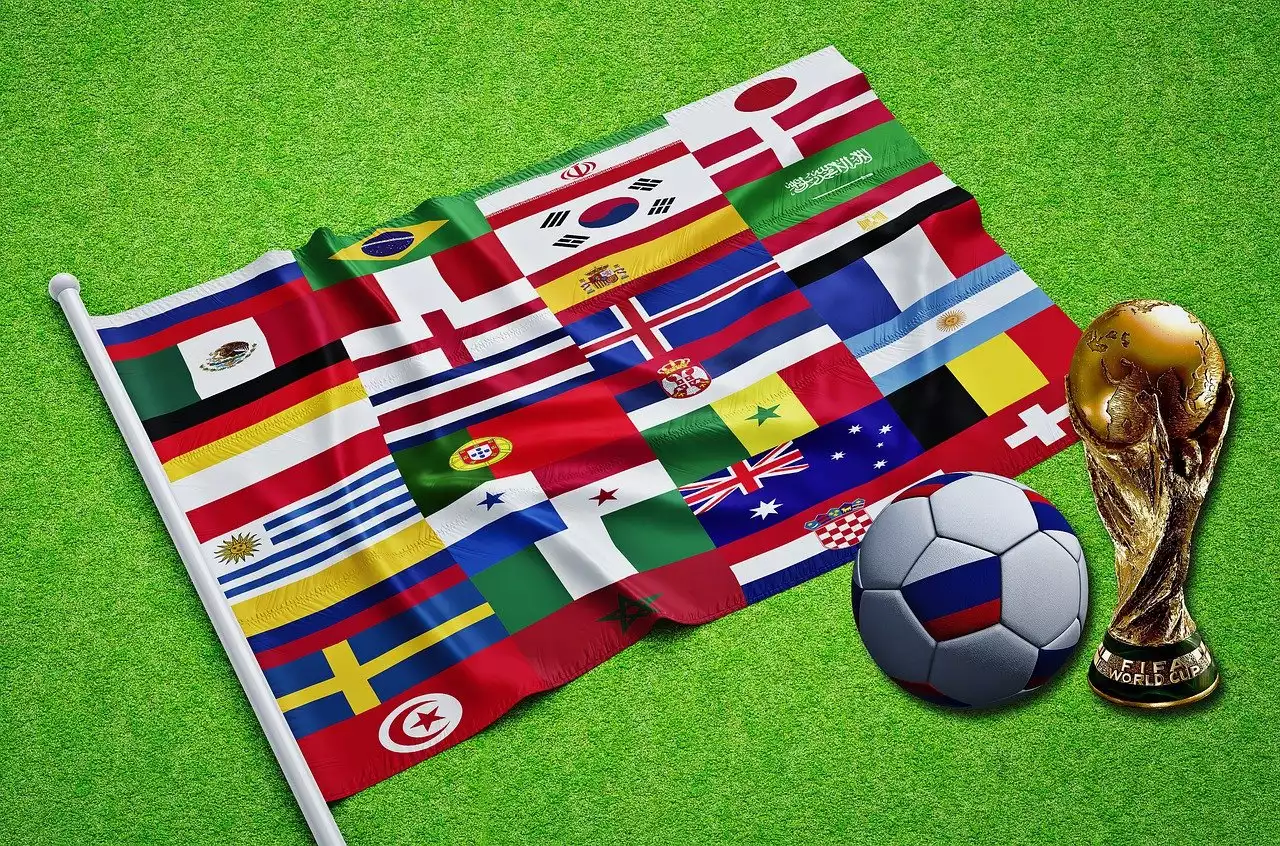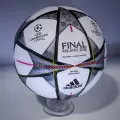The World Cup is the biggest event in football, which is why it also has some of the most specific and unusual regulations. The official ball for the tournament has to meet very specific criteria, from its panel design and colors to its weight and feel when dribbled. It’s a tall order for any manufacturer, but Adidas is no stranger to this task and has been the official ball supplier since 1970. Let’s take a look at the history of official World Cup balls since the new millennium.
FIFA World Cup 2018 ball
The Adidas Telstar 18 is the official ball for the 2018 FIFA World Cup. It is a reimagined version of the iconic ball used during the 1970 FIFA World Cup in Mexico. The design is very similar, but there are a few technological advancements. The ball uses a hybrid synthetic leather made from carbon fiber and thermoplastic urethane and a butyl bladder. The Telstar 18 has a different feel compared to the Brazuca, and it has a new look that is sure to impress. The design is meant to look like an old-school soccer ball, with black and white panels, but Adidas has modernized it with some blue elements. The black and blue color combination are the same as the one used for the Champions League ball. The black and white panels are inspired by the ’70s soccer shirts.
2014 FIFA World Cup ball
The Adidas Brazuca is the official ball for the 2014 FIFA World Cup in Brazil. It is the successor to the Jabulani ball used in the previous two tournaments. The name of the ball comes from the Brazilian Portuguese term for “Brazilian people”. The Brazuca is the first ball to be completely manufactured by Adidas. It is made with an entirely synthetic material called “Six-Star”, which is softer than latex while providing better touch. The Brazilian theme was reflected in the colors of the ball, which were inspired by the flag of Brazil and the art of Brazilian artists. The ball’s design features the word “Brazuca” emblazoned across it in bold letters, while the official World Cup logo is printed below. Brazuca is written in capital letters in the official FIFA language of Brazilian Portuguese. Adico’s website says the name was “inspired by the joy of football and the Brazilian way of living.”
2010 FIFA World Cup ball
The Adidas Jabulani is the official ball for the 2010 FIFA World Cup in South Africa. It is the successor to the Teamgeist ball used in the 2006 FIFA World Cup. The name Jabulani means “to celebrate” in Zulu. The Jabulani was made with a synthetic material called “X-Press” (which is similar to latex), and it was the first time Adidas made a ball “from scratch”. The ball’s design featured the usual Adidas colors, with a green color that represents the continent of Africa. The design of the ball was also inspired by Africa’s wildlife and landscape. The ball’s name means “celebrate” in Zulu. Adidas said it was inspired by Africa’s landscapes and animals and “the joy of celebration”.
2006 FIFA World Cup ball
The Adidas Teamgeist is the official ball for the 2006 FIFA World Cup in Germany. It is the successor to the Finale 98 ball used in the 2000 and 2002 World Cups. The name Teamgeist means “team spirit” in German. The ball is made with a synthetic material called “Gecko”, and it is the first ball to be made with a latex bladder. The design features Adidas’ traditional three bands plus a white band on the outside. The ball’s design and name are inspired by the German team’s uniforms and their historical success (Teamgeist is a German term that refers to the cohesiveness of the team). The design includes colors inspired by the German flag and the host country’s landscape.
2002 FIFA World Cup Ball
The Adidas Finale 98 is the official ball for the 2002 FIFA World Cup in Korea and Japan. It is the successor to the Tango 98 ball used in the 1998 World Cup. The name Finale 98 is a play on the year the tournament is being played (2002) and the fact that the tournament will be the last held in Asia. The ball is made with a synthetic material called “X-Press” (which is similar to latex), and was the first ball to be made with that material. The ball’s design features the traditional Adidas three-bands plus the color orange. The color choice is meant to represent the Asian culture, where the tournament is being held. The design includes elements inspired by the host country’s landscape and architecture. The ball was available with either the standard black or orange color scheme or with a special World Cup “Final Fantasy” design.

.png?size=50)
 The Elite Legacies: 5 Teams with the Most FA Cup Wins
The Elite Legacies: 5 Teams with the Most FA Cup Wins
 The Dark Side of Fandom: Hooliganism in Bolivia Primera Division
The Dark Side of Fandom: Hooliganism in Bolivia Primera Division
 How the Atmosphere in Argentine Stadiums Affects The Game
How the Atmosphere in Argentine Stadiums Affects The Game The First Official ball for the FIFA World Cup
The First Official ball for the FIFA World Cup FIFA World Cup Official Ball Russia 2018
FIFA World Cup Official Ball Russia 2018 All Adidas FIFA World Cup Official balls
All Adidas FIFA World Cup Official balls Adidas Telstar 19 - FIFA World Cup Official ball for Qatar 2022
Adidas Telstar 19 - FIFA World Cup Official ball for Qatar 2022